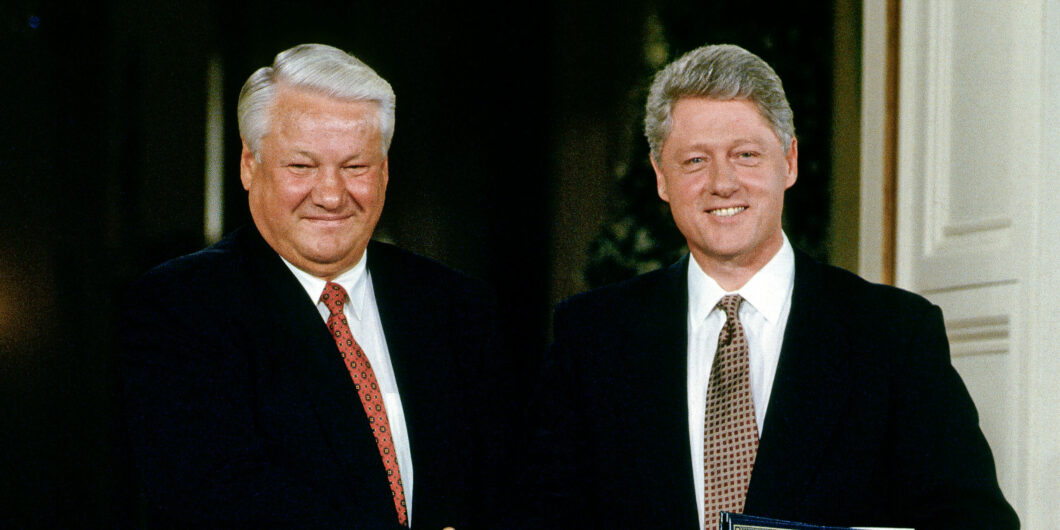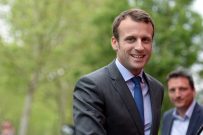2023 was marked by disorder and instability in our country and the world. Those are not the conditions of liberty.
Losing Russia
The dissolution of the Union of Soviet Socialist Republics and the seeming end of the Cold War once offered hope of an enduring peace in Europe and a new era in Moscow’s relations with the West. Those hopes were dashed when Russia emerged from the wreckage of the USSR, flirted with democracy, and then surrendered to the despotism that plagues the nation today. In Who Lost Russia? From the Collapse of the USSR to Putin’s War on Ukraine, Peter Conradi offers readers an objective and well-informed account of the period from 1989–2022. This is a work of history, insightful geopolitical analysis, and a compelling narrative supported by revealing anecdotes and first-person interviews.
Conradi’s first edition of this work was published to deservedly laudatory reviews in 2017. This new edition of that work includes five welcome and timely new chapters that cover the period from the 2016 US Presidential election to the Russian invasion of Ukraine in February 2022. With this latest edition, the author explores the factors that drove a wedge between Russia and the West, launched Moscow’s several military incursions in its near abroad, and resulted in the bloodiest conflict in Europe since World War II.
Conradi is a journalist, seasoned foreign correspondent, and best-selling author. Previously based in Brussels, Zurich, and Moscow, he was named deputy foreign editor of The Sunday Times of London in 1998 and became foreign editor in 2013. He currently serves as the Europe editor of The Sunday Times and The Times of London. He is also the co-author of The King’s Speech: How One Man Saved the British Monarchy which inspired the Oscar-winning film of the same name. His service as Moscow correspondent from 1988 to 1995 offered him a unique opportunity to view the dissolution of the Soviet Union. His first-hand knowledge of this period shapes part of the narrative in Who Lost Russia? and provides exceptional context to understand later events in Russia.
Russia’s Place in the World
Who Lost Russia? is a solid account of post-Soviet Russia’s relationship with the West and especially with the United States. Conradi shapes his narrative around the Russian policies of US presidential administrations and Washington’s relations with Russian leaders from Mikhail Gorbachev to Vladimir Putin. This approach is more than a tacit recognition of the unipolar world—the unchallenged leadership of the United States after the fragmentation of the USSR. It also speaks to the issue of how Russia saw its place in this re-ordered world.
There is little doubt that in the early 1990s American had genuinely wanted to welcome Russia in the West; yet not as Gorbachev had proposed in his last summit with Bush in July 1991, as an equal partner. If Russia were to be a partner, it would have to be a junior one. Yet Russia, by virtue of its size, history, and arsenal of doomsday weapons, was not prepared to be treated like a larger Poland. It had been granted the status of a superpower during the Cold War, and insisted this should continue.
It failed to appreciate, however, that this status had been tied to its ideological pull as the centre of an alternative socialist worldview, and by the sense of menace it exuded. Take away these and Russia was no longer able to claim to be an equal of the United States. . . . The sense of gloom was compounded by the “loss” of the Soviet Republics, which, to many Russians . . . seemed a senseless partition of the country.
Conradi is nevertheless critical of Western diplomacy that treated Russia as “a vanquished foe” and compares the post-Soviet Russian Federation to the Weimar Republic; both nations struggled to create democratic institutions, heal internal divisions, and build a new economy. He faults the “paucity of Western aid” to cash-starved Russia that squeezed pensions and government spending and failed privatization plans, bereft of regulatory controls, that “undermined the case of liberals within the government by making economic reform synonymous with unfairness and the enrichment of an elite minority.”
Who Lost Russia? also charts the course of other failed initiatives—NATO’s Partnership for Peace and the ill-fated NATO-Russia Council among them—as episodes that soured efforts to draw Moscow closer to the West. He also cites the NATO bombing and intervention in Yugoslavia, the war in Iraq, “and, above all, the steady expansion of NATO towards Russia’s borders (that) poisoned relations.”
Conradi makes an evenhanded assessment of NATO enlargement. He argues the independent states of Central and Eastern Europe and the Baltic had sovereign rights to choose to join the trans-Atlantic Alliance. But, he also notes “Moscow’s unwillingness to tolerate the presence of a hostile military alliance close to its border” and that Ukraine’s future membership in the Alliance was a “provocation that added to the resentment produced by earlier decisions to admit other states” in Europe. That long-simmering resentment was in part, Conradi claims, what drove Russian President Vladimir Putin to war in Ukraine.
The Rise of Putin
Conradi observes that Putin’s rise to power in Russia “had been extraordinary both for its speed and its unexpectedness.” It is also extraordinary that Putin has now been in power for 24 years.
A protégé of Russian President Boris Yelstin, there was nothing in Putin’s background to suggest he had the skills to see his country through a period of upheaval and transition and remain in power. Yet Yeltsin appointed Putin first as Prime Minister and then chose Putin as his successor as president of Russia in 1999. Then, in 2000, Putin won the presidency in a national election and methodically began to sideline rivals, rein in the Russian oligarchy, marginalize his opponents, and build what Conradi calls the “vertical power” to enable him to reach from Moscow down to control regional and city governments.
Simply put, the Russian people lost Russia. The reforms introduced during the Yeltsin era could not survive without robust and continued support from the people themselves.
The author recounts how, “after the wild swings of the Yeltsin years,” Putin fashioned a more stable government even as he shifted increasing power to himself. Putin was buoyed by the improving Russian economy— fueled by rising oil prices, consumer spending, and foreign direct investments—and by public optimism that what they called the “sick days” of the 1990s were behind them.
Despite Western support for Russia’s economic progress, Conradi argues that by 2006 Putin believed “he had made a string of concessions—ranging from support for the ‘war on terror’ to acceptance of a second wave of NATO expansion—but had received nothing in return.” Events in Georgia, the Color Revolutions in Eurasia, and the George W. Bush administration’s open advocacy of intervention to promote democracy abroad proved worrisome to Moscow. Increasingly wary of the West’s intentions, “Putin began to see conspiracies everywhere.”
Conradi recounts how Putin vented his dissatisfaction at the 2007 Munich Security Conference. The first Russian leader to ever appear at this foreign policy forum let loose a “broadside against America and what he saw as its determination during the years since the collapse of the Soviet Union to create, and dominate, a ‘unipolar world.’” Putin would go on to abandon any pretense of rebuilding Russia’s political institutions along Western lines.
New Russian Ideology, Renewed Aggression
Putin had, by now, decided there could be no meaningful partnering with the West. Instead, Conradi explains, Putin fashioned a far more assertive national policy to re-establish “Russia as an independent center of power” and built a more autocratic government. “Fundamental elements of democracy such as the separation of powers, an independent judiciary, the rule of law, and freedom of the press, which had been established during the Yeltsin era, were being eroded.”
One-party rule emerged as did a new Russian ideology, Conradi argues. Russia, under Putin would establish itself “as a champion of traditional conservative values and as an enemy of openness, diversity, and liberalism.”
Underpinning it all was a form of exceptionalism that argues that Russia has a unique vocation. Just as the Soviet Union once claimed to be the centre of world communism, so Russia was now positioning itself as a beacon of traditional, conservative values in a decadent liberal world. This marked the beginning of a third path for the country, that was not based on Soviet nostalgia, nor on integration with the West.
Conradi explains Putin never had any intention of presiding over a nation in decline. “He had, instead, embarked on a mission to restore its greatness, inspired in part by a growing obsession with its glorious past.” Putin was driven by “an almost messianic” fervor to reunite the broken empire’s Slavic core—what he claimed as “tens of millions of our fellow citizens and countrymen (who) found themselves beyond the fringes of Russian territory” with the dissolution of the USSR and the new independence of former Soviet Republics. Who Lost Russia? describes how Putin’s obsession, and his fear of Russia’s border nations becoming fully aligned with the West, led to catastrophic miscalculations.
Who Lost Russia? details how Putin embraced a more aggressive posture abroad and at home. He directed the Russian intervention in Georgia, launched the invasion and annexation of Crimea, overtly supported pro-Russian separatists in eastern Ukraine, and provided lethal arms and combat air support to Syria’s Bashar al-Assad. Putin ignored his overseas critics and launched a ruthless crackdown on internal dissent.
Emboldened by presidential election victories in 2012 and 2018, Putin orchestrated amending the Russian constitution to permit him to stand for office again in 2024. In 2020, Russian voters overwhelmingly approved the amendment. Secure in his power, and virtually assured of six more years in office, Putin demanded massive concessions from Ukraine and NATO. The demands, Conradi reports, were a pretext. “Angry and entrenched” Putin yielded to “his obsessive desire to rewrite the history of the past three decades” and made his secret plans to go to war.
Who lost Russia? Conradi writes “it is difficult to pinpoint the moment at which relations between Russia and the West went wrong. . . . [I]t may be there was never a time when they really went right.” There is needless equivocation in his assessment. The answer lies in the threads Conradi himself has woven through the larger narrative of his book.
Simply put, the Russian people lost Russia. The reforms introduced during the Yeltsin era could not survive without robust and continued support from the people themselves. Generations of Russians, with no real experience of democracy, struggled to accept change and embrace the nature of compromises in self-governing societies. They abandoned their fledgling democracy for the bland assurances and false promises of a demagogue. They have received in return an insidious oligarchy, a brutally repressive police state, despotism, and war.



